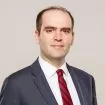Since the Supreme Court decided Alice v. CLS Bank in June 2014, the USPTO regularly issued new memoranda explaining its implementation of the § 101 framework. This includes some of the more notable memos for prosecutors: the memo on Enfish v. Microsoft from May 2016, the memo on McRO and BASCOM from November 2016, and dozens of eligibility examples. Much of that guidance is incorporated into the MPEP. While the guidance does not have the force of law, patent examiners are expected to follow it.
On October 17, 2019, the USPTO issued new guidance - 22 pages worth - on § 101. While it covers fewer topics than past guidance, it goes into more detail on Step 2A - providing clarifications, reiterating certain concepts, and introducing a new procedure for abstract ideas falling outside of the enumerated groups in the January 2019 guidance ( New Year, New Section 101 Guidance: Welcome 2019!). There are also new examples ( USPTO's 101 site).
Prong One of Step 2A:
The PTO clarifies that a claim recites a judicial exception when the exception is "set forth" or "described" in the claims (pp. 1-2). (For example, Diamond v. Diehr had claims that "set forth" the exception, while Alice v. CLS Bank "described" the exception.)
One point addressed in this guidance - not addressed much in previous guidance - is how to treat multiple abstract ideas in a single claim (p. 2). The new guidance explains that examiners should consider the limitations for both abstract ideas together as a single idea, "if possible," when reviewing the remaining elements under Step 2B (as opposed to, for example, analyzing remaining elements for each abstract idea individually).
The PTO further clarifies what falls into each group of abstract ideas.
For "mathematical concepts" (pp. 3-4), the new guidance explains that examiners must distinguish between claims that recite mathematical concepts and claims that "merely include[] limitations that are based on or involve a mathematical concept." A claim does not recite a mathematical concept if it is only based on or involves a mathematical concept.
For "certain methods of organizing human activity" (pp. 4-6), the guidance explains that not all methods of human activity fall under this category—only those in the enumerated sub-groupings of "fundamental economic principles or practices, commercial or legal interactions, managing personal behavior, and relationships or interactions between people."
For "mental processes" (pp. 7-9), the guidance explains that a claim does not recite a mental process unless it contains "limitations that that can practically be performed in the human mind." (Emphasis added.) This is somewhat stronger language than in past guidance and may be useful for overcoming rejections using this as a rationale.
The guidance discusses familiar case law in the "mental processes" area, including those having limitations that cannot be practically performed in the human mind (SiRF v. ITC, SRI v. Cisco, TQP v. Intuit, Research Corp. Techs. v. Microsoft) and those having limitations where the mental processes of observations, evaluations, judgments, or opinions may be performed in the human mind (Electric Power Group, Univ. of Utah v. Ambry Genetics, Classen v. Biogen IDEC, In re Brown). The guidance also explains that a claim merely including a computer with high level functionality may still recite a mental process.
The earlier January 2019 guidance explained that abstract claim limitations must fall into one of these three categories. If not, a Technology Center director, the guidance explains, must sign off on the application. In those situations, the new guidance explains that the public will be notified via www.uspto.gov/PatentEligibility when such an Office Action is mailed. (At publication, the website did not yet list any uses of this procedure).
Prong Two of Step 2A:
The PTO clarifies (pp. 12-13) that while Prong Two of Step 2A and Step 2B have similar analyses with respect to improving functionality or technology, they are slightly different. The analysis in Prong Two for "improvements" is made without reference to what is well-understood, routine, and conventional activity, while Step 2B requires that inquiry. (The guidance explains that the specification is important here, but that other evidence may be submitted "providing testimony on how one of ordinary skill in the art would interpret the disclosed invention as improving technology" under 37 CFR § 1.132.)
The guidance also discusses certain considerations that are important for treatment/prophylaxis claims (pp. 13-15). For example, treatment/prophylaxis limitations must be "particular" so as to avoid all applications of the judicial exception and must include more than mere fields of use or extra-solution activity. But the limitations need to have more than a nominal or insignificant relationship to the exception in order to integrate it into a practical application.
The guidance then reiterates the requirements of a prima facie case (pp. 15-16). The primary difference from previous guidance highlights that rejections based on abstract ideas "should explain why a specific limitation(s) recited in the claim falls within one of the enumerated groupings of abstract ideas."
This guidance does push things a bit further away from the former case law-based approach, and more towards using examples and categories that examiners can apply more predictably. Examiners have not received training on this guidance, but the language in the guidance may nevertheless be helpful for overcoming rejections under § 101.
The content of this article is intended to provide a general guide to the subject matter. Specialist advice should be sought about your specific circumstances.

